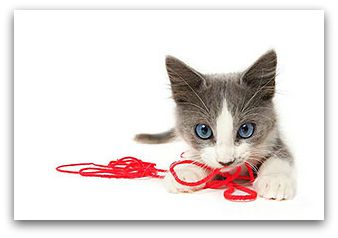Examples of Good Customer Service
Even if you master each and every one of the best Internet marketing strategies out there-
sales copywriting, search engine optimization, email marketing, and the rest- they're
not worth a dime if you forget the examples of good customer service.
It's a strategy that every truly successful business knows about and pays careful attention to...
because the one thing ALL successful businesses have in common is customers. Satisfied
customers.
Today, I want to show you examples of good customer service and how to make every one of your customers a satisfied customer - so happy that they'll return again and again, and send new customers your way
I'll look at several proven ways you can do this, including:
- Reducing the risk for your customers to get more sales
- Going that extra mile to get more repeat business and more referrals from
delighted customers
- Providing great after-sales support to keep customers coming back
- Personalizing your offers to make your customers remember you
- Listening to your customers to keep them loyal to your business
So let's take a look at some great examples of best customer service from across the spectrum --
online, offline, retail, service, hospitality... anywhere the customer is Number One!
Why examples of good customer service is ESSENTIAL for online success
There's an old saying in business: A happy customer will tell one or two people, an unhappy one will tell 10!
So it pays to keep your customers happy - and even more so when doing business online.
In the Internet age, a seriously ticked-off customer might not only tell 10 people, they might also write a lengthy rant on their blog, post comments on other people's blogs, write a negative review of your site on a shopping web site, or criticize you on forums and message boards.
Or all of the above!
In extreme cases, some unhappy customers even start web sites or blogs devoted to airing
their grievances about a particular company. Microsoft, UPS, and Wal-Mart are all among the - mostly corporate - targets of customers with a grudge.
While small businesses are unlikely to be targeted in such a way, the viral nature of the Internet means that a negative comment about your company can spread faster than a fire in a matchbox.
And worse, once something has been written about you online, it's very difficult to get it removed.
This means that any prospective customer who decides to "Google" your business name could
come across it.
So, while finding examples of good customer service might cost some time and money, bad customer service costs you prospective customers and their lifetime value. Think how much losing even just 10 sales would cost you, and compare it to the extra sales you'll gain from making your customers happy.
And case study after case study shows that finding examples of good customer service, building it into a business also increases efficiency, as well as sales.
The stronger your guarantee, the more sales you'll generate- guaranteed!
The guarantee offered by mail-order retailer Lands' End, simply says, "Guaranteed. Period."
Shoppers can return their items anytime and for any reason.
It's an example of good customer service strategy that serves them well. In fact, they market their company on the back of it, calling it, "The most watertight guarantee in the business."
And just in case you think Lands' End is a big corporation whose strategies don't apply to you, I should mention this has been one of the foundations of their business since they were a three-man operation doing mail order out of their store basement.
Most importantly, Lands' End stands by that guarantee...to the extent that one of
their catalogs featured the story of a man who returned an antique car he'd purchased...
several years after he bought it!
First of all, the company sells clothes, not cars- he'd bought the car through a special promotion.
And second, he'd been driving around in it for a while. But, by honoring the guarantee in such a way, they turned the story of a returned car into a marketing vehicle for their excellent example of good customer service.
And it worked. Here you are reading about it!
You can be sure that the goodwill and word-of-mouth publicity generated by accepting such an "unusual" return more than offset the cost of refunding the car buyer.
That's the lesson here: A strong, well-written guarantee - one you stand by unconditionally - is not only an example of good customer service, but is proven to actually increase sales by...
- Removing any risk on the part of the buyer and giving them the confidence to
buy from you.
- Boosting your credibility as a trustworthy seller who believes in your product,
and who's willing to back up your belief in it.
Now, some people worry about being ripped off by unscrupulous buyers who purchase an item,
get everything they want from it, and then return it to take advantage of the guarantee.
It happens, but not often -- as long as you offer an excellent product!
Our tests show that you'll receive fewer returns with a one year guarantee than with a
six-month guarantee, and a six-month guarantee will bring in fewer returns than a 30-day guarantee.
Bottom line... the stronger your guarantee, the more sales you'll generate- and the fewer
returns you'll actually get.
Keep your customers coming back by providing MORE services than they expect
Why not go that extra mile and provide EXTRA services that add value to your offer?
While they may cost you a little extra up front, the payoff comes in the form of more referrals and more repeat business.
Or you can even use your example of good customer service as part of your offer and charge a little more, knowing that your customers will be willing to pay the extra for all the services you provide. (This is something well worth testing.)
Take the example of a dry cleaner I read about recently who offers an example of good customer service to keep people coming back to him... and it turns out that his customers are more than willing to pay a little more for the many extra services he offers.
Instead of just taking dirty clothes from customers and returning them spick-and-span,
this dry cleaner decided to offer his customers much more, including:
- Free pick-up and delivery
- Folding or hanging cleaned clothes according to preference
- Wrapping shirts in plastic with a piece of cardboard to help maintain their shape
- Providing a sturdy laundry bag (with his logo on it, of course!)
This guy understands that his customers are busy, and anything he can do to make their
lives easier will be appreciated - and be worth paying more for.
So he not only cleans clothes, he provides convenience and turns a tedious chore into
a pleasant and painless experience.
And does providing great, value-added customer service like this work in terms of retaining
customers and attracting new ones? You bet... I found this story through a happy customer's blog!
The other interesting thing about this story is that the dry cleaner advertises some of his
extra services, but not others, meaning that his new customers are often very pleasantly
surprised by the extra services they receive.
And ALL customers love to be surprised with a little extra bonus they didn't expect!
David Kern of ApplePoly.com. He sells a nutritional supplement derived from apple peel,
and gives away a free mini-sample of his product with every order.
Is it worth it?
Definitely, according to David, who says, "Our cost is a few dollars. One new client is worth hundreds or thousands in lifetime value. I like the math!"
Provide killer after-sales support to get more repeat business
Another way to over-deliver is to provide excellent AFTER-SALES support.
One mistake many business owners make is that they think their job is done after that first sale.
Nothing could be further from the truth.
A quick after-sales email or phone call to check that everything is OK with a purchase can be really appreciated by customers. It can also relieve any feelings of "buyer's remorse" they might have, reinforcing the positive feelings about your business they had when they originally bought from you.
And, by checking in with your customers, you can find out a lot about how they use your product - and what they like and dislike about it - so you can refine your product and marketing.
You can also head off any problems BEFORE they become complaints.
Or why not just say, "Thank you" to your customers? Don't try to sell to them. Just send them a letter or email thanking them for their business and telling them that you value them as customers.
The fact is, you spend so much time and money promoting your products to get that first sale that it's worth spending just a little extra to make sure your new customers come back, and tell their friends.
Make it personal: Keep track of your customers' likes and dislikes and they'll be back
What's the one word that is guaranteed to turn your head when you hear it?
Your name.
Think how nice it is when a bank teller greets you by name or a hotel receptionist remembers you from a previous visit.
The fact is, personalizing your communications with customers is another proven marketing
AND customer service strategy.
But personalization doesn't just mean addressing your customers by name. It also means providing - or at least appearing to provide - personalized service.
Like the garage that makes a note of when your next car service is due - and sends you a letter or calls you with a reminder.
Or the corner store owner who remembers that you like a particular flavor of canned soup and orders more in for you.
Or the coffee shop barista who remembers your favorite drink!
Personalization is one of the oldest customer service strategies in the book... because it works!
Later on, I'll tell you exactly how you can use this strategy to build a more personal relationship with your online customers.
Listen to customer concerns and ACT ON THEM... or else!
If there are two things that define BAD customer service, it's these:
- Not listening to your customers
- Not acting on any complaints or concerns
Ignoring customers when they complain or raise a concern, and then not doing anything to
remedy the situation is a surefire way to destroy your reputation.
Most of your customers are reasonable. They know that things go wrong, that people make
mistakes, and that sometimes things happen that are simply unavoidable.
But, they still like you to acknowledge that you've made a mistake, and to know that you'll do your best to keep it from happening.
That's why good restaurants will give you a free bottle of wine if your meal is late in arriving, or provide a free desert if they get your order wrong, or replace a poorly prepared dish - no questions asked.
Because if they DON'T do those things... well, would you go back? Of course not. And you'd
probably tell your friends and co-workers not to go their either. Whammo. Lost business.
So, if and when a customer complains, here's what you need to do to avoid potentially losing not only their future business, but that of anyone else they tell about the situation:
- Don't hide - make it easy for someone to contact you with a concern
- Remember, the customer IS always right
- Be quick to acknowledge and apologize for any mistakes
- Tell customers what you have done to remedy the situation and to make sure it won't
happen again
- Don't offer empty apologies - use your judgment to decide whether you should offer a refund or other compensation
The blog software provider Six Apart famously offered their Typepad blog customers up to 45 days worth of free blog hosting as compensation for a period of serious disruption to their service.
They did lose customers, but they also retained many who appreciated the gesture.
Sometimes, just acknowledging your mistake and apologizing IS enough. On the flip side, the cost of NOT listening to your customers can be severe.
Making your customers happy makes your job easier- and more profitable!
Now that you've seen how important customer service is to your business, here are some
simple strategies to get you started:
Step #1: Automate your sales process to keep best customer service in the loop.
Use autoresponders to thank your customers for their order, welcome them to your opt-in
email list, and send them order confirmations and other transactional emails like,
"Your item has shipped" notices.
Customers have come to expect these courtesies, but not everyone online bothers.
And you can even add a surprise element to these best customer service emails by including
a coupon for money off their next purchase, or some extra information they'll find relevant to the product they've bought.
Autoresponders also let you send follow-up after a customer has bought from you to ask
if everything is all right and if there's anything further you can do.
Even though you can create these autoresponders in no time, they make customers feel
that you're paying attention to them.
Step #2: Create a comprehensive FAQ (Frequently Asked Questions)
A FAQ answers most of the questions people might have about your products or services.
You should put it on a page on your web site, and create a FAQ autoresponder
(an automatic email sent to any customer who emails a particular email address, such as
info@[mysite].com).
To make your FAQ most effective, don't just make up the questions and answers -- keep track
of the questions that customers or site visitors actually ask, and answer them.
With those common questions taken care of, you'll be freed up to spend time giving
personal attention to the 10% or so that require it.
The people who find what they need in the FAQ are satisfied immediately, and those who need
something extra get it without having to wait a long time for you to get around to them.
The more quickly you handle their concerns the more impressed they'll be.
And you'll also stand out in the crowd -- a recent Pelorus Group study found that a shocking
42% of retail web sites take five days or longer to respond to customers!
It's often the times when you respond to a customer's concerns promptly and personally
that generate a huge amount of goodwill for your business... and more referrals.
Step #3: Make it easy for people to contact you
There will always be times when a customer needs to talk to or email someone directly, so
don't hide your contact details away in a dark corner of your web site, and always
provide contact information on every message or newsletter you send out.
It's also a good idea to put your phone number at the end of your FAQ so people can contact
you with any questions not covered in your FAQ.
You can even create an Examples of Good Customer Service page on your site that includes your FAQ, the names and email addresses/phone numbers of people who can help, and other relevant information.
Step #4: Personalize and segment your email messages
I can't say this often enough: Use your customers' names in your email subject lines and in
your messages.
Only 4% of marketers personalize their messages, according to Jupiter Research, and yet
personalized messages have almost TWICE the click-through rate of non-
personalized messages.
As an online business owner, you can personalize your communications with customers in
many ways, including:
- Personalizing emails with names and other pieces of information you collect
- Sending customers personalized birthday offers
- Sending customers details of new products you know they'll be interested in. (In its
Consumer Email Study, DoubleClick reported that 43% of the respondents would respond
to "purchasing recommendations based on past purchase behavior.")
Step #5: Ask your customers how you can give examples of good customer service to them
People love doing short surveys, and it's been shown that customer satisfaction is higher among people who have been asked what they want, even if their answers haven't been acted upon. Just asking what your customers want and how you can give examples of good customer service makes them feel listened to.
Actually acting on their suggestions and improving your service is gravy!
Final thoughts on examples of good customer service
Best customer service doesn't cost much. You don't have to spend a fortune giving
away free products or large discounts.
Even a small gesture like thanking customers for their business can help maintain
a positive vibe around your business.
Because, no matter the cost of going the extra mile for your customers, it's worth it to avoid them spreading negativity about your service... or just never coming back to buy from you again.
Examples of good customer service forms an impenetrable force field around your company, protecting you from the crippling damage poor customer service can cause.
And automating your everyday examples of good customer service tasks frees you up to respond to real concerns or complaints - making your overall customer service even faster and better.
Remember, if you treat examples of good customer service as the best Internet marketing strategies available to you, and really work at it, your customers will pay you back by returning again and again... and by telling their friends about you.
|
|




























